6 things I wish I'd known before starting wild swimming
Open water swimming is a huge amount of fun, but there are some ways to make it an even better experience that might not be immediately obvious when you're a beginner
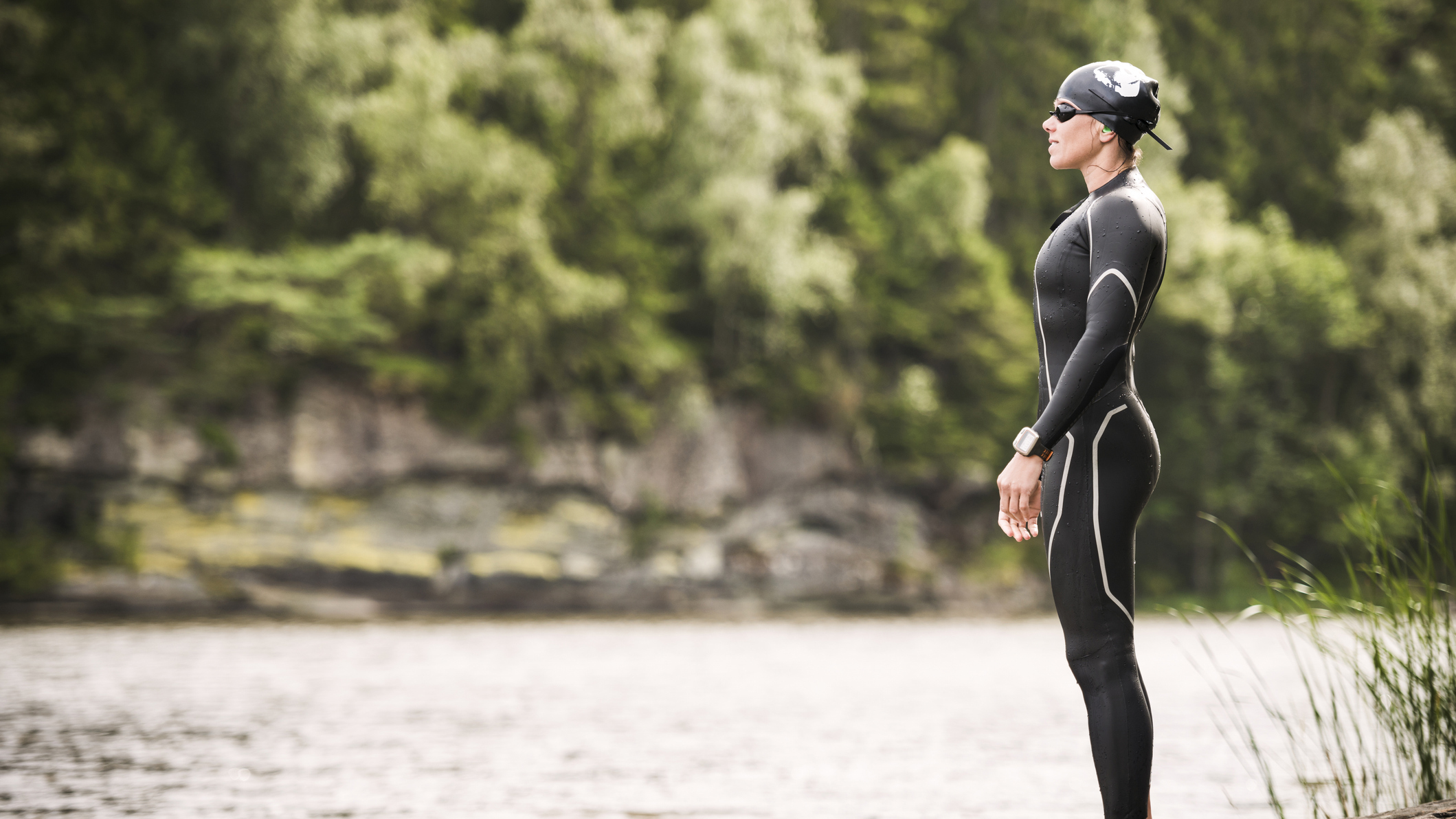
If you're brand new to wild swimming then you may be raring to dive in (although it's better if you don't). But there are some things it's helpful to know that might take you a while to figure out, unless you're lucky enough to have a wild swimming group near you with seasoned veterans ready to pass on their knowledge.
I've been wild swimming for almost 10 years, but I wish I'd had these facts at my disposal when I started out...
1. Wetsuits can help you float
One of the great fears many new wild swimmers suffer from is that they will sink and drown. While it’s not possible to reduce any risk to zero you can make your experience a lot safer by the simple act of wearing a swimming wetsuit.
Sinking legs can be counteracted by good open water swimming technique but lean people are especially prone to this. Thankfully, the neoprene in a swimming wetsuit is often thicker in zones that float less, such as the legs, helping you to stay buoyant. When buying a wetsuit, it’s worth mentioning if you have issues with sinking legs, so that your retailer can guide you to a suit with more leg buoyancy.
And don't worry that eating before swimming will make you less able to swim. There's no science behind that claim at all, as was found in this comprehensive 2011 review by the International Life Saving Federation.
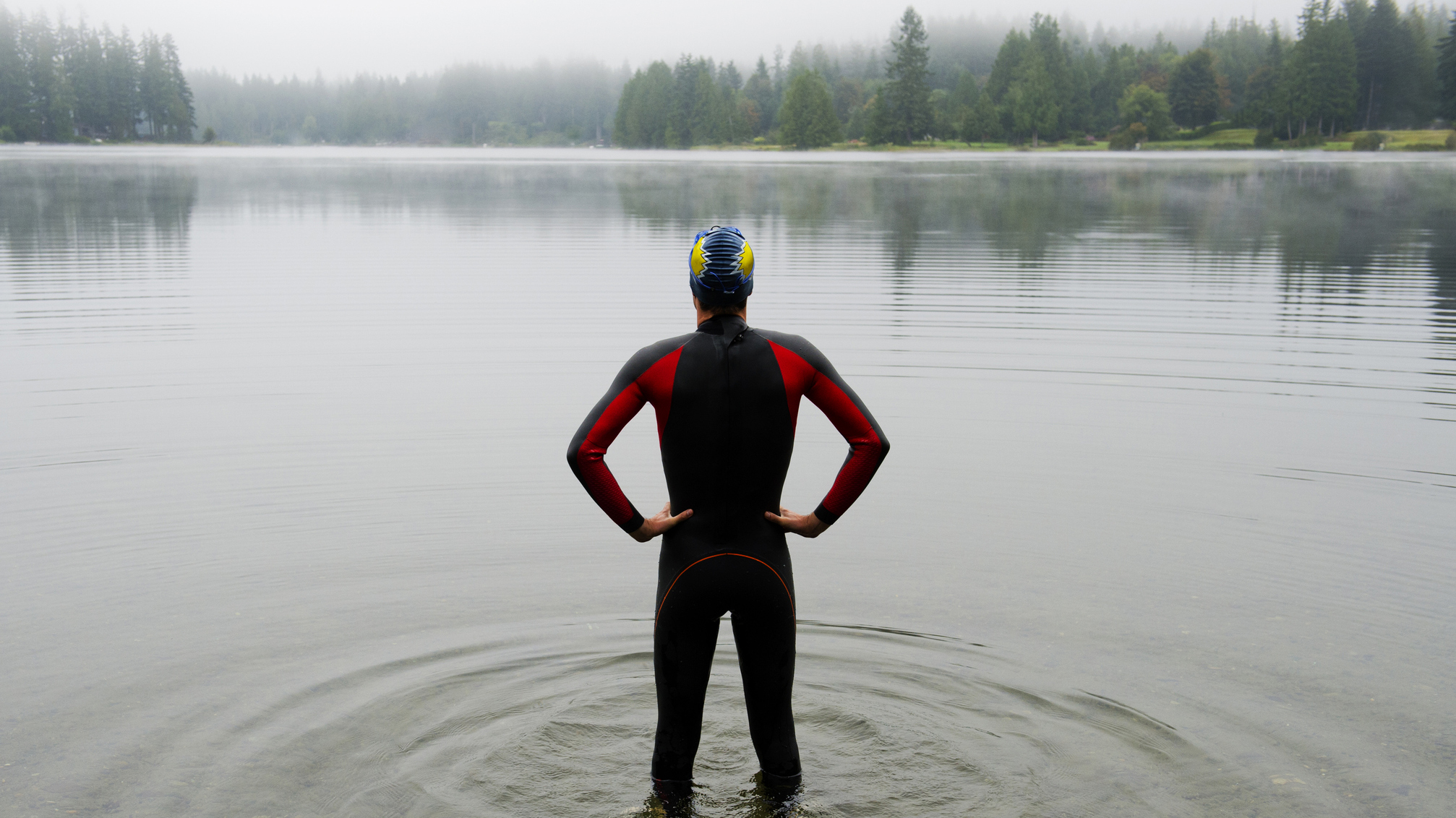
2. But you might not want a wetsuit in winter
If you plan to swim for extended periods at any time of year then, unless you’re lucky to live somewhere super hot, you’ll probably want one of the best wetsuits to stop you from getting too cold. However, if you are planning to swim through winter then you may not be able to stay in the water for very long, even with a wetsuit. The general rule many swimmers use in winter is to spend one minute in the water for every °C of water temperature. So if the water is 37.4°F / 3°C, you’re only going to spend three minutes in it (read more here about how to stay safe in open water).
Hauling on a wetsuit at the water’s edge, even if you’re sporting one of the best changing robes, will increase your exposure to the cold beforehand, and taking it off afterwards with stiff fingers will also eat precious time. Some people also find that being completely encased in neoprene in winter means they can end up feeling disconnected from the water. So many winter swimmers just don’t bother with a wetsuit at all!
Advnture Newsletter
All the latest inspiration, tips and guides to help you plan your next Advnture!
That doesn’t mean you should just wear a swimsuit and nothing else (see below), but ditching the wetsuit is definitely an option to consider. If you do want to swim in winter, try to build up your cold tolerance by starting in summer or autumn and continuing to swim regularly as it gets colder. This is a much safer approach than stopping in summer and then diving into a freezing sea at a Christmas or New Year’s Day swim.
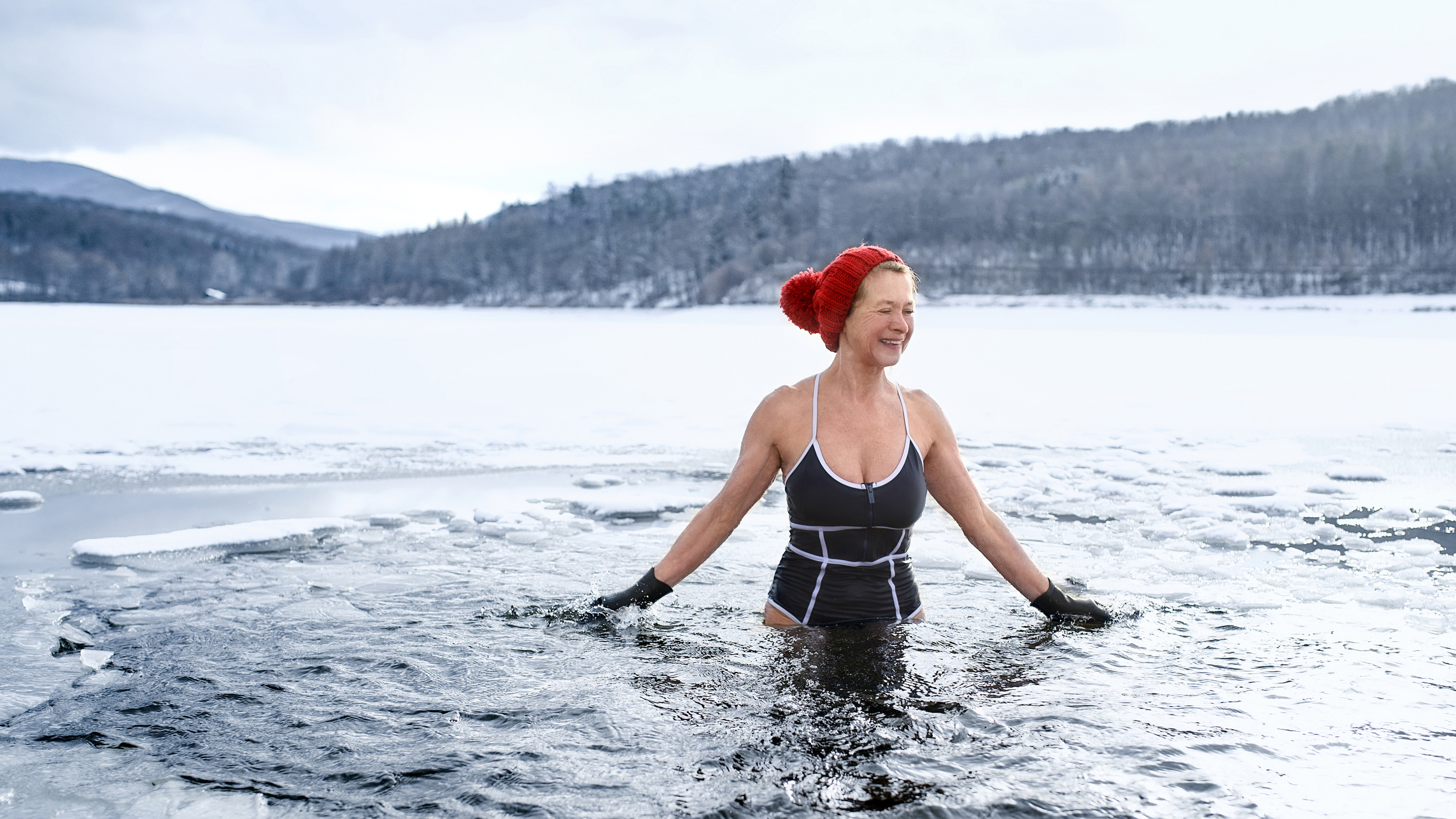
3. Your hands, feet and face will feel the cold most
When you first start swimming in open water it may be during the summer or the fall, when it’s warmest. But if you try swimming in the colder months you will notice straight away that it’s your extremities that really suffer. Getting into icy water, you may find that your hands and feet almost feel like they’re on fire. This is for two reasons; they have very little body fat to protect them from the cold, and they are absolutely packed with nerve endings. Both of these factors make them much more sensitive to changes in temperature than other parts of the body. Putting your face or head in can be an even more intense and painful experience!
When I’m swimming in winter I wear neoprene boots and gloves, a wooly hat to keep my head warm, a long sleeve swimsuit and, if it’s really cold, a neoprene vest under the swimsuit to keep as much heat as possible in my core. However, if you’re trying to train seriously in winter you may prefer a neoprene swim cap. Do bear in mind that neoprene boots and gloves will create more drag in the water and slow your stroke down. So there is a balance to be struck here between fending off the cold, and putting in the miles as effectively as possible.

4. You’ll get colder after you get out
Seasoned wild swimmers speak knowledgeably of something called ‘the afterdrop’. This is the phenomenon that means you can feel significantly colder up to 40 minutes after swimming than you did when you left the water. Many swimmers believe that the afterdrop is caused by blood that has been drawn to your core returning to your extremities/skin once you leave the water. However, this isn’t the case.
When you are swimming your body pulls blood to your core to protect your vital organs by keeping them warmer for longer. The circulation to your skin is shut down and this turns your subcutaneous fat into a kind of thermal layer, also helping to protect you from the cold.
Once you’ve left the water this process stops - but not straight away. It can last anything from 10 to 40 minutes. And this is what causes the dreaded afterdrop. In fact, you can lose up to 40.1°F / 4.5°C from your core temperature after you get out of the water. Which can be the difference between feeling fine and hypothermic. So it’s important to stop swimming BEFORE you feel too cold, rather than waiting until you’re shivering.
Once you’re out you need to warm up, but it’s better to do it gradually rather than, for example, taking a hot shower, which can increase blood pressure and make you feel faint or ill. If you’re going to have a shower after swimming, make it warm, but not hot!
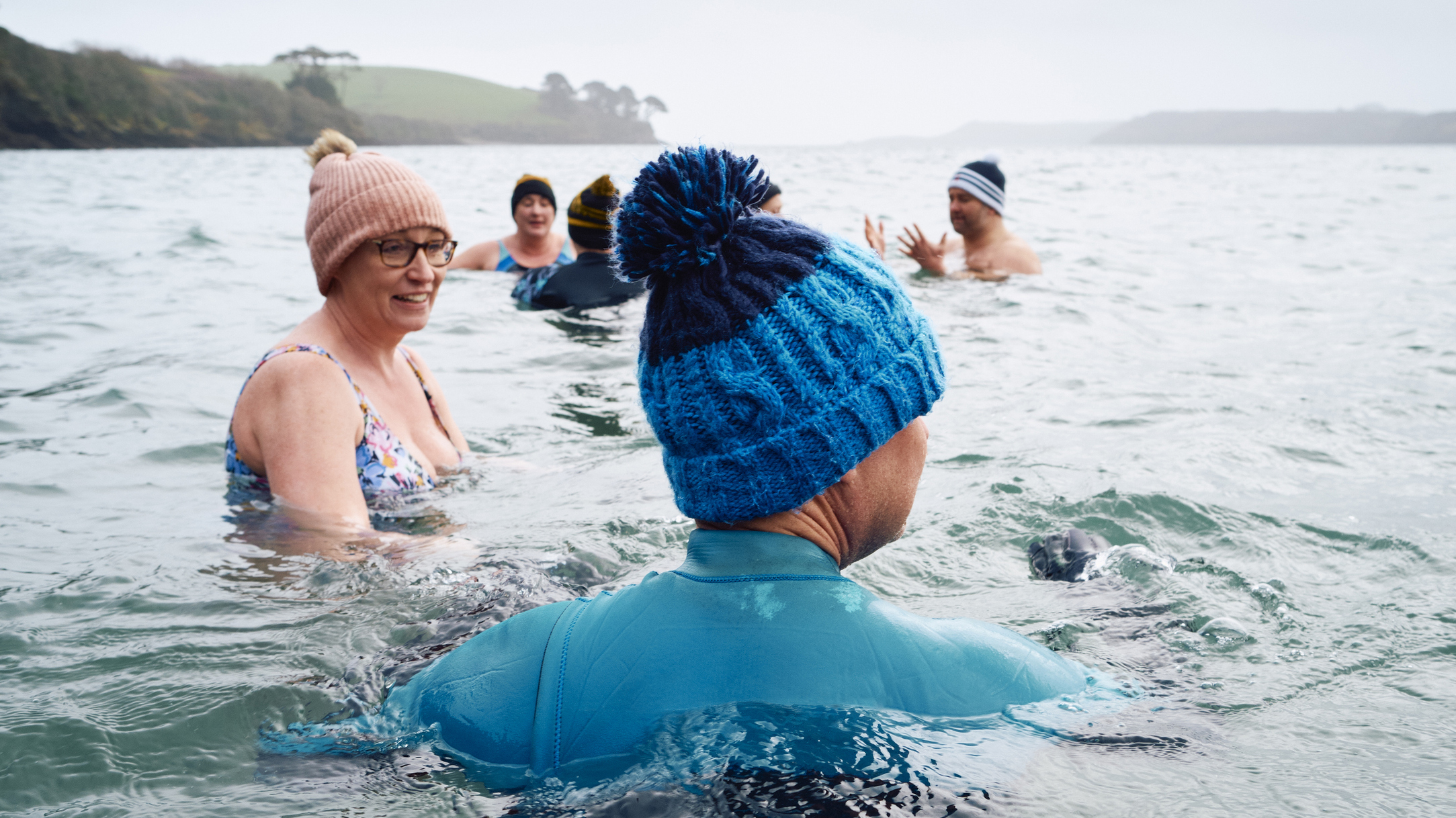
To help avoid afterdrop, follow these protocols after you’ve left the water:
- Get the top half of your body dressed first - this is your core and is the most important part of your body to warm after swimming.
- Dry yourself off quickly. Water left on the surface of your skin will continue to have a cooling effect.
- Get some layers on! While it’s great to have a cozy changing robe to chuck on, if you can put some layers on underneath it you’ll find you warm up again more easily. Thermals, wooly layers, and a warm hat and gloves will all help you get back to a good temperature.
- Bring something to stand on. Feet don’t have much body fat and so they are easy targets for getting cold and staying cold. A yoga mat works well, or choose a drybag that comes with a changing mat, like the Red Getaway. If you’re swimming in really extreme temperatures you could bring a flask of hot water and a washing up bowl to pour it into to stand in!
- Drink something warm slowly, and eat something. Carbohydrates are best to help raise body temperature after a swim.
- Get somewhere warm. The easiest thing to do is go and sit in your car if you’ve driven to where you’re swimming. If not, aim for a nearby cafe or shop. Anywhere that is heated.
- Walk around to help generate more body heat.

5. The water will be warmer in fall than in summer
After a childhood of swimming in the quarry pits near my Cotswold home, I largely stuck to training in pools (unless I was on holiday somewhere hot) when I got serious about swimming again. So when I went wild swimming with a friend for the first time as an adult, I was shocked by how cold the water was. Even with a wetsuit, the river we swam in still felt icy and made me catch my breath when I got in. I know now that June, when we were swimming, is still a relatively chilly time of year in the UK for water temperature.
If you live somewhere that has big changes in temperature between the seasons then the warmest time of year to swim should be right at the beginning of fall, as the water has had the whole season to heat up but isn’t cooling off just yet.

6. Avoid swimming after heavy rain
Eight years ago I swam my first Dart 10k and quickly learned why swimming straight after rainfall is a bad idea. The night before the race it absolutely poured. As I got in the water I discovered it was much colder than the temperature of the event the day before, thanks to all the extra water that had flowed into the river.
The Dart 10k takes place on a river that mostly runs through the countryside. And that means run off - when mud and chemicals wash from agricultural land into the nearest water source. I have no idea whether there are overflow release points for sewerage along the route.
But while I survived the swim and returned home with merely sore muscles and a muddy wetsuit, the event’s Facebook page told a different story. Swimmer after swimmer complained of suffering from severe stomach upsets that took days to abate. Despite now being a veteran of three Darts, and numerous other events, I have yet to experience this first hand. But I’ve heard enough horror stories about swimmers getting sick to know that it’s important to be cautious. If you swim after rain you are far more likely to encounter run off or sewerage releases. And the concentrations of bacteria in some releases by water companies seem to be so high that it would be nigh on impossible to avoid getting ill.
If you’re swimming somewhere you’re not sure of the water quality, keep your face out of the water, your mouth shut, and your goggles on. Ears, eyes and nose are the easiest ways for something nasty to get into your system, but any cuts or sores can also be a route in, so make sure they are covered with a waterproof plaster at the very least.
You can reduce your chances of getting ill by having a shower after your swim, preferably with soap. If this isn’t possible then use hand sanitizer and wash your hands and face the first chance you get! Oh, and before you ask, will drinking Coke will prevent a dodgy tum? The short answer is no. A piece of swimming urban legend that science has dismissed. It’s simply not true.
For more advice on wild swimming and open water events, check out these guides:
- How to stay safe in open water: wild swimming for beginners
- The best wild swimming spots: find the perfect place to take the plunge near you
- The best wild swimming gear: what to wear and what to take
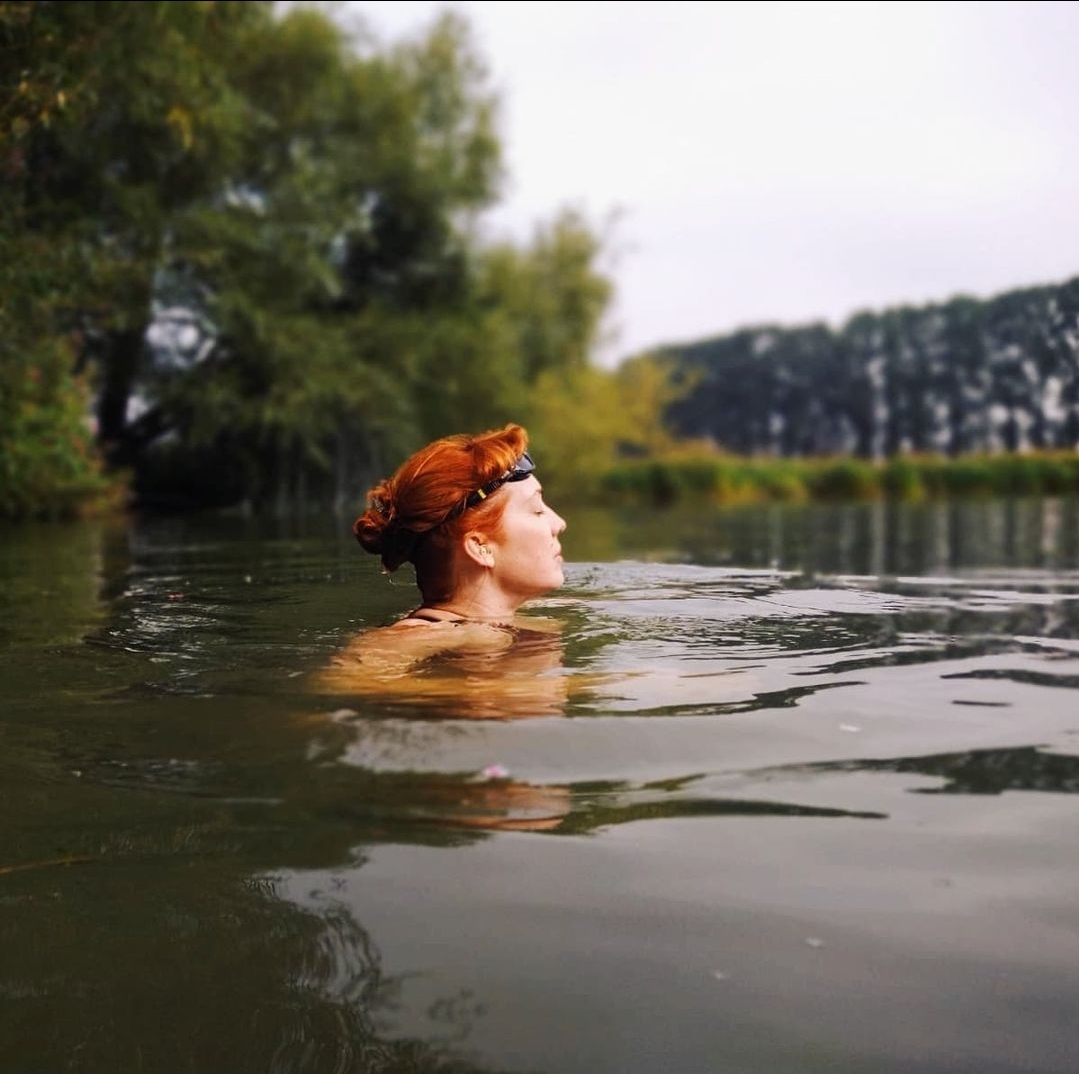
Rosee Woodland developed a taste for adventure at a young age, growing up in a home where camping was the default holiday, and good weather was a vacation bonus rather than a necessity. After bike-packing the length of France in her mid teens with her family, she started to undertake solo forays in her 20s, usually without the benefit of much technical gear at all. Happily, the years she later spent as a mountain biking journalist eventually gave her an appreciation of decent kit! These days she loves a water-based adventure, and is an outdoor swim coach, and a keen free diver. She has a soft spot for Northern Ireland's Mourne mountains, and can also be found hiking and kayaking in Pembrokeshire and the South West of the UK.
